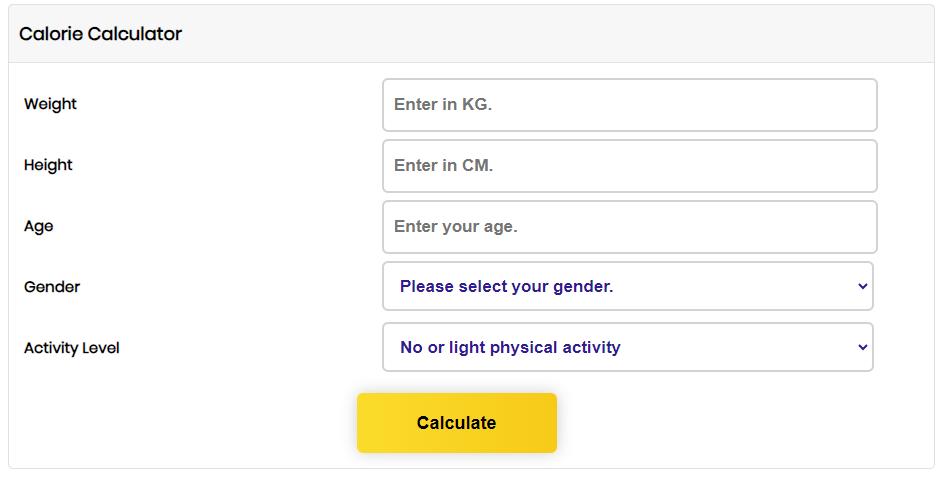In the pursuit of optimal health and fitness, understanding the intricacies of your dietary intake is paramount. One of the most effective strategies to achieve this is through tracking your macronutrients—proteins, carbohydrates, and fats—using a calorie calculator. This powerful tool not only aids in achieving your specific nutritional goals but also provides a comprehensive insight into your eating habits. In this article, we will guide you through the process of accurately tracking your macros, offering expert advice and practical tips to help you harness the full potential of a calorie calculator. Whether you are striving for weight loss, muscle gain, or simply a balanced diet, mastering this skill will empower you to make informed dietary choices and take control of your health journey.
Understanding Macronutrients and Their Role in Your Diet
Macronutrients—comprising carbohydrates, proteins, and fats—are the cornerstone of a balanced diet, each playing a pivotal role in your overall health and wellness. Carbohydrates are your body’s primary energy source, powering everything from your brain to your muscles. Proteins are essential for muscle repair and growth, making them critical for anyone engaged in physical activities. Fats, often misunderstood, are crucial for hormone production, brain function, and absorbing fat-soluble vitamins. To achieve optimal health, it’s vital to consume these macronutrients in the right proportions.
- Carbohydrates: Aim for complex carbs like whole grains, legumes, and vegetables to maintain energy levels and promote digestive health.
- Proteins: Include a variety of sources such as lean meats, fish, dairy, and plant-based options like beans and lentils to ensure a complete amino acid profile.
- Fats: Focus on healthy fats from sources like avocados, nuts, seeds, and olive oil to support cardiovascular health.
To track these macronutrients effectively, a calorie calculator can be an invaluable tool. By inputting your daily food intake, you can monitor your macronutrient ratios, ensuring you’re meeting your dietary goals. This method not only helps in maintaining a balanced diet but also supports specific health and fitness objectives, such as weight loss, muscle gain, or improved athletic performance. Leveraging technology to track your macros can transform your approach to nutrition, making it easier to stay on course and achieve your desired outcomes.

Choosing the Right Calorie Calculator for Accurate Macro Tracking
When it comes to achieving precise macro tracking, selecting the right calorie calculator is paramount. Accuracy and user-friendliness should be at the forefront of your decision-making process. Look for a calculator that not only considers your age, weight, height, and activity level but also allows you to customize your macro ratios based on your specific goals. Whether you aim to lose weight, gain muscle, or maintain your current physique, the flexibility to adjust your macronutrient distribution is crucial.
- Comprehensive Database: Ensure the calculator has a vast food database, enabling you to log meals effortlessly.
- Custom Macro Goals: Opt for tools that let you set personalized protein, carb, and fat targets.
- Integration Capabilities: Choose calculators that sync with fitness apps or devices for seamless tracking.
- Regular Updates: Prefer platforms that frequently update their algorithms to reflect the latest nutritional science.
By prioritizing these features, you can find a calorie calculator that not only meets your needs but also enhances your macro tracking journey, ensuring you stay on track with your nutritional objectives.

Step-by-Step Guide to Inputting Your Dietary Information
To efficiently track your macros using a calorie calculator, begin by gathering essential dietary information. Start with identifying your daily caloric intake, which serves as the foundation for determining your macronutrient needs. Gather the following information to input into the calculator:
- Your current weight and target weight.
- Activity level (sedentary, lightly active, moderately active, very active).
- Dietary preferences or restrictions (e.g., vegan, gluten-free).
- Personal goals (e.g., weight loss, muscle gain, maintenance).
Once you have your data ready, input it into the calculator. This tool will automatically compute your daily macronutrient requirements, breaking down calories into proteins, carbohydrates, and fats. This breakdown is pivotal for tailoring your diet plan to meet specific health goals. Pay close attention to the macro ratios suggested, and adjust your food intake accordingly to ensure you stay on track with your nutritional objectives.

Analyzing Your Macro Data for Optimal Health Adjustments
Delving into your macro data can reveal invaluable insights about your dietary habits and how they align with your health goals. Analyzing this data is crucial for making informed adjustments that optimize your health. Begin by regularly reviewing your macro intake through the reports generated by your calorie calculator. Look for patterns and deviations that may indicate areas needing improvement.
- Identify Imbalances: Check if you’re consistently hitting your target for proteins, fats, and carbohydrates. An imbalance might suggest a need to tweak your meal plans.
- Assess Nutrient Timing: Observe when you consume your macros throughout the day. Adjusting the timing can enhance energy levels and workout performance.
- Track Progress: Use historical data to see how macro adjustments have affected your weight, energy, and overall well-being.
By systematically analyzing your macro data, you empower yourself to make strategic dietary changes that support your health journey. Remember, the key is consistency and willingness to adapt based on what your data reveals.
